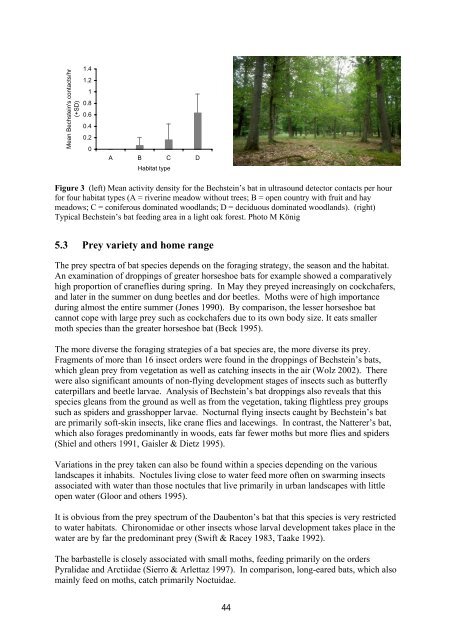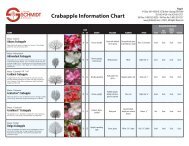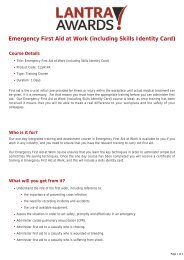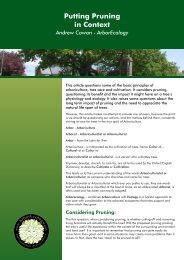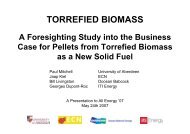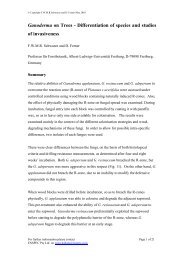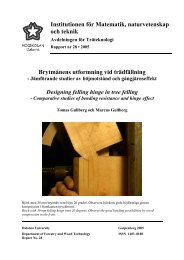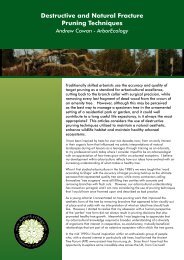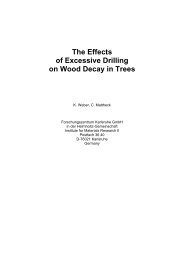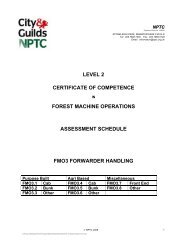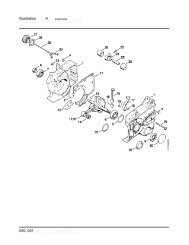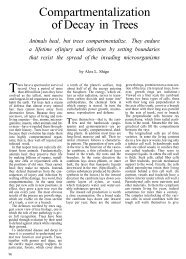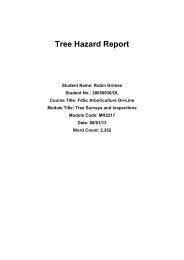working today for nature tomorrow - Justus-Liebig-Universität GieÃen
working today for nature tomorrow - Justus-Liebig-Universität GieÃen
working today for nature tomorrow - Justus-Liebig-Universität GieÃen
- No tags were found...
You also want an ePaper? Increase the reach of your titles
YUMPU automatically turns print PDFs into web optimized ePapers that Google loves.
Mean Bechstein's contacts/hr(+SD)1.41.210.80.60.40.20A B C DHabitat typeFigure 3 (left) Mean activity density <strong>for</strong> the Bechstein’s bat in ultrasound detector contacts per hour<strong>for</strong> four habitat types (A = riverine meadow without trees; B = open country with fruit and haymeadows; C = coniferous dominated woodlands; D = deciduous dominated woodlands). (right)Typical Bechstein’s bat feeding area in a light oak <strong>for</strong>est. Photo M König5.3 Prey variety and home rangeThe prey spectra of bat species depends on the <strong>for</strong>aging strategy, the season and the habitat.An examination of droppings of greater horseshoe bats <strong>for</strong> example showed a comparativelyhigh proportion of craneflies during spring. In May they preyed increasingly on cockchafers,and later in the summer on dung beetles and dor beetles. Moths were of high importanceduring almost the entire summer (Jones 1990). By comparison, the lesser horseshoe batcannot cope with large prey such as cockchafers due to its own body size. It eats smallermoth species than the greater horseshoe bat (Beck 1995).The more diverse the <strong>for</strong>aging strategies of a bat species are, the more diverse its prey.Fragments of more than 16 insect orders were found in the droppings of Bechstein’s bats,which glean prey from vegetation as well as catching insects in the air (Wolz 2002). Therewere also significant amounts of non-flying development stages of insects such as butterflycaterpillars and beetle larvae. Analysis of Bechstein’s bat droppings also reveals that thisspecies gleans from the ground as well as from the vegetation, taking flightless prey groupssuch as spiders and grasshopper larvae. Nocturnal flying insects caught by Bechstein’s batare primarily soft-skin insects, like crane flies and lacewings. In contrast, the Natterer’s bat,which also <strong>for</strong>ages predominantly in woods, eats far fewer moths but more flies and spiders(Shiel and others 1991, Gaisler & Dietz 1995).Variations in the prey taken can also be found within a species depending on the variouslandscapes it inhabits. Noctules living close to water feed more often on swarming insectsassociated with water than those noctules that live primarily in urban landscapes with littleopen water (Gloor and others 1995).It is obvious from the prey spectrum of the Daubenton’s bat that this species is very restrictedto water habitats. Chironomidae or other insects whose larval development takes place in thewater are by far the predominant prey (Swift & Racey 1983, Taake 1992).The barbastelle is closely associated with small moths, feeding primarily on the ordersPyralidae and Arctiidae (Sierro & Arlettaz 1997). In comparison, long-eared bats, which alsomainly feed on moths, catch primarily Noctuidae.44


